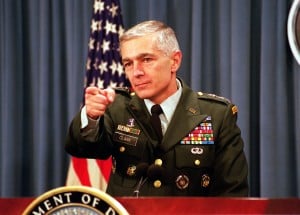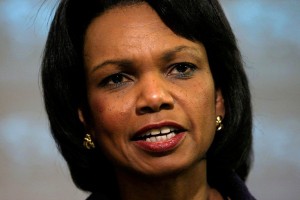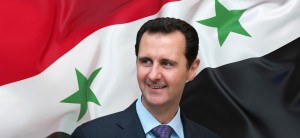Dr. Tim Anderson: The Dirty War on Syria, Chapter 2: Syria and Washington’s ‘New Middle East’
INTRODUCTION BY DANIEL WIRT

The rise of ISIS and the presence of al-Qaida, this time both used by the US and its western allies to topple Assad, shows that the global war on terror is a sham.
 The Orwellian disinformation and lies about the situation in Syria and the Middle East and its causation have been chronically disseminated by the presstitutes in the mainstream media and the pro-imperialist “left” (referred to by some wags as the “Left Boots of NATO”) in alternative media.
The Orwellian disinformation and lies about the situation in Syria and the Middle East and its causation have been chronically disseminated by the presstitutes in the mainstream media and the pro-imperialist “left” (referred to by some wags as the “Left Boots of NATO”) in alternative media.
Thankfully, there are several exemplary exceptions in the alternative media —analysts, journalists and researchers doing careful, intellectually honest, evidence-based work. Dr. Tim Anderson, a Senior Lecturer in Political Economy at the University of Sydney is an epitome in this regard, clearly one of the world’s experts on the recent history of Syria.
Dr. Anderson is compiling many of his excellent, heavily-researched but highly readable articles on Syria (http://www.globalresearch.ca/author/tim-anderson) into an upcoming book, “The Dirty War on Syria.” These articles (chapters) are vitally important for anti-imperialists, and thus The Greanville Post will republish all of them serially, chapter-by-chapter. We urge The Greanville Post readers to read them and use them to counter the Orwellian disinformation campaign against Syria.
Please click below to review the chapters being planned for The Dirty War on Syria. This is essential for your proper comprehension of this topic.
The following text is Chapter 2 of Professor Tim Anderson’s forthcoming book entitled The Dirty War on Syria
The following text is chapter two of professor Tim Anderson’s forthcoming book entitled “The Dirty War on Syria”
After the invasions of Afghanistan and Iraq and the destruction of Libya, Syria was to be the next state overthrown. Washington and its regional allies had planned this for some time.
After ‘regime change’ in Damascus, Syria’s ally Hezbollah, leader of the Lebanese Resistance to Israel, would be isolated. The Islamic Republic of Iran would remain the only Middle East country without US military bases. After Iran, Washington would control the entire region, excluding possible competitors such as Russia and China. Palestine would be lost.
This was all part of Washington’s plan for a ‘New Middle East’; but it was not to be. Determined and coordinated resistance can never be discounted. Syria’s national army has resisted wave after wave of fanatical Islamist attacks, backed by NATO and the Gulf monarchies, and Russian and Iranian support remained solid. Importantly, Syria has built new forms of cooperation with a weak but emerging Iraq. Washington had worked for decades to divide Iran and Iraq, so the strengthening ties between Iran, Iraq, Syria, Lebanon and Palestine represent a regional challenge to the new ‘Great Game’ of our times. The Middle East is not just a big power playground.
The US and its close regional collaborators (Saudi Arabia, Israel, Turkey, Qatar and Jordan), we now know, have been behind every anti-Syrian extremist group since the beginning of the recent conflict. They have used the worst of reactionary and sectarian forces to pursue their ends. The Axis of Resistance, on the other hand, should not be misunderstood as a sectarian phenomenon. This group – the Islamic Republic of Iran, secular Syria, the Lebanese Resistance led by Hezbollah and the Palestinians – is deeply anti-imperial. Syria, the only remaining ‘secular’ state in the region has long allied itself with the Islamic Republic of Iran, including against Saddam Hussein’s secular Iraq. Saddam in turn was used by Washington to degrade Iran, after that country’s 1979 revolution. On the other hand, Iran never backed the sectarian Muslim Brotherhood in any of its insurrections against secular Syria. Iran does support the Shia Muslims of Hezbollah, but it is most demonised for arming Palestine, which has hardly any Shia. This plurality disproves any claims that the Axis of Resistance is sectarian. Promotion of sectarianism in the Middle East mostly comes from Washington’s key allies, Saudi Arabia, the other gulf monarchies, and the ethnic cleansers of Israel. They share the US aim of keeping the region weak and divided.

The UK’s PM, David Cameron doing his duty, also, in Ryadh. The alliance with the criminal kleptocrats in the Gulf is seen as essential by the Anglo-Zionists.
[dropcap]H[/dropcap]ow did Syria come to be targeted? We can chart the hostility back to Syria’s central role in the Arab-Israeli wars, especially those of 1967 and 1973, a common regional struggle against the expansionist Zionist state. After that, Syria’s support for 1979 Iranian Revolution put it offside with Washington. As far back as 1980, under the Carter administration, Washington was searching for a ‘change of regime’ in Damascus. A cable from the National Security Council to Secretary of State Zbigniew Brzezinski urged a coordinated study, including with their European and Arab monarchy partners, of ‘identifying possible alternative regimes’ to the Government led by Hafez al Assad. They were considering how to ‘reduce the problems of ill-considered reaction [by Syria’s ally, the Soviet Union] to a change of regime in Damascus’. The memorandum also recognised that any withdrawal of Syrian troops from Lebanon (Syria had entered Lebanon to stop the civil war, in 1975; it would stay until 2005) would run a ‘high’ risk of renewed civil war in that country and create ‘high incentives for Israeli military engagement in southern Lebanon’ (NSC 1980).
It was thus no coincidence that the Muslim Brotherhood, – always the most organised Syrian opposition group, and whose history of collaboration with outside powers dated back to the 1940s – began a series of bloody sectarian attacks from this point onwards, until their last insurrection was crushed in Hama in 1982. That insurrection had been backed by US allies Saudi Arabia, Saddam Hussein and Jordan (Seale 1988: 336-337). US intelligence at the time observed that ‘the Syrians are pragmatists who do not want a Muslim Brotherhood government’ (DIA 1982: vii). However US analysts, soon after, used the repression of the Muslim Brotherhood at Hama to demonstrate ‘the true establishment of Syria as a totalitarian state’ (Wikas 2007: vii). This was a useful fiction.
[dropcap]T[/dropcap]he next strategic shift against Syria came after the September 2001 attacks on the World Trade Centre New York, and the decision of Bush the Second to declare a ‘war on terror’. Although various pretexts were made for the interventions which followed, an overall plan for the Middle East was very rapidly set in train. Former senior US General Wesley Clark said in his memoirs that, two weeks after the September 2001 attacks, he was told by a ‘senior general’ at the Pentagon that the attack on Iraq (which came 18 months later) was already decided. Six weeks later he says that same general told him, ‘It’s worse than that’, before indicating a memo ‘from the Office of the Secretary of Defence … [saying] we’re going to take out seven countries in five years’.
 That list began with Iraq and Syria and ended with Iran (Clark 2007). Iraq’s ruler Saddam Hussein had been an enemy of Syria, through his opportunistic backing of the Syria Muslim Brotherhood and for his collaboration with the US in the long and bloody war against Iran. However the Syrian Government, led by Hafez al Assad, had supported the expulsion of Iraq from Kuwait in what has been called the First Gulf War (1990-1991). That war, whatever one thought of Kuwait’s monarchy, was a clear breach of the UN doctrine of collective security and, on that basis, attracted a UN Security Council mandate to intervene. However both Syria and Iran opposed the later invasion of Iraq (2003), even though it would depose their mutual enemy Saddam. The invasion of Iraq was clearly illegal and a war of aggression.
That list began with Iraq and Syria and ended with Iran (Clark 2007). Iraq’s ruler Saddam Hussein had been an enemy of Syria, through his opportunistic backing of the Syria Muslim Brotherhood and for his collaboration with the US in the long and bloody war against Iran. However the Syrian Government, led by Hafez al Assad, had supported the expulsion of Iraq from Kuwait in what has been called the First Gulf War (1990-1991). That war, whatever one thought of Kuwait’s monarchy, was a clear breach of the UN doctrine of collective security and, on that basis, attracted a UN Security Council mandate to intervene. However both Syria and Iran opposed the later invasion of Iraq (2003), even though it would depose their mutual enemy Saddam. The invasion of Iraq was clearly illegal and a war of aggression.
It was the unintended consequences of the invasion and occupation of Iraq that led to a shift in US policy, a move which was called a ‘redirection’ (Hersh 2007). Once Saddam Hussein’s Ba’athist administration had been deposed, a newly installed government in Damascus began a shift towards friendlier relations with Iran. It was not just that the majority of Iraq were Shia Muslims like, but not to as great an extent as, in Iran. Iraqis had developed a more pluralist culture, and did not want a religious state. However with Iran’s enemy Saddam out of the way, matters of genuine common concern could be discussed in a more normal climate of neighbourly relations. Yet the idea of good neighbourly relations between Iraq and Iran seriously worried Washington. They had not fuelled the Iraq-Iran war, nor invaded Iraq, to help bring about that outcome.
 As early as 2005 US Secretary of State Condoleezza Rice began to speak of spreading ‘creative chaos’ in the region, to advance President Bush’s plan for a New Middle East (Karon 2006). Drawing on the traditions of the great powers, Washington set up a new ‘divide and rule’ strategy. White House insiders called Bush’s new policy ‘the redirection’, involving a more open confrontation with Iran and attempting to drive a ‘sectarian divide between Shiite and Sunni Muslims …[Yet] to the distress of the White House, Iran has forged a close relationship with the Shiite dominated government of Prime Minster Nuri al-Malaki’ (Hersh 2007). Rice told the US Senate Foreign Relations Committee she saw ‘a new strategic alignment’ in the region, with ‘Sunni states’ [the Gulf monarchies] as the centres of moderation and Iran, Syria and Hezbollah ‘on the other side of that divide’ (Hersh 2007).
As early as 2005 US Secretary of State Condoleezza Rice began to speak of spreading ‘creative chaos’ in the region, to advance President Bush’s plan for a New Middle East (Karon 2006). Drawing on the traditions of the great powers, Washington set up a new ‘divide and rule’ strategy. White House insiders called Bush’s new policy ‘the redirection’, involving a more open confrontation with Iran and attempting to drive a ‘sectarian divide between Shiite and Sunni Muslims …[Yet] to the distress of the White House, Iran has forged a close relationship with the Shiite dominated government of Prime Minster Nuri al-Malaki’ (Hersh 2007). Rice told the US Senate Foreign Relations Committee she saw ‘a new strategic alignment’ in the region, with ‘Sunni states’ [the Gulf monarchies] as the centres of moderation and Iran, Syria and Hezbollah ‘on the other side of that divide’ (Hersh 2007).
The idea was to play on community divisions to create conflict, particularly in Iraq. US Central Command’s ‘Red Team’ exercises began in 2006, with military planning focused on divisions which they characterised as Arabs versus Persians (Iranians), later asking themselves whether ‘Sunni-Shia [might be] a more appropriate framework?’ Their key assumption was that ‘there does not appear to be a scenario where Arabs and Persians will join forces against the US/West’ (Narwani 2011). The cutting edge of the operation would be the creation of al Qaeda in Iraq (IQI), funded by the Saudis and carrying out sectarian attacks on mosques and other community centres, to inflame community tensions. Senior western officials have acknowledged privately that the various billionaires of Saudi Arabia (along with the other Gulf monarchies) constitute ‘the most significant source of funding to Sunni [sic] terrorist groups worldwide’ (Jones 2014).
Although al Qaeda in Iraq, a.k.a. the Islamic State of Iraq (ISI), at first claimed to be overwhelmingly Iraqi (Felter and Fishman 2008: 3), Saudi finance and recruiting significantly internationalised it. Records captured by the US military in October 2007 at Sinjar, on the Iraqi-Syrian border underline this. Those records referred to a group of about 500, half of whom were Saudi, then North African (Libyan, Algerian, Tunisian, Moroccan) and then others. Other estimates between 2005 and 2007 suggested greater or lesser degrees of various nationalities, with the largest group (40-55%) being Saudis (Felter and Fishman 2008: 8, 30-31).
A notorious example of the strategy to provoke sectarian conflict was the February 2006 bombing of the al Askari mosque in Samarra, in southern Iraq, which killed over a thousand people. Despite calls for restraint by Shia leaders in Iraq, Iran and Lebanon, there were sectarian reprisals. When arrests were made this act was said to have been carried out by an al Qaeda seven-man cell, led by an Iraqi with a Tunisian, four Saudis and two other Iraqis (Ridolfo 2007). Although al Qaeda was implicated from the start, US media and analyst focus shifted to what they called ‘Iraq’s sectarian divide’ (Worth 2006). Yet while Saddam Hussein had backed the Muslim Brotherhood in Syria, he did not allow al Qaeda groups in Iraq. That was a more recent development, and not just an ‘organic’ reaction to the US occupation. Western sources sometimes acknowledge that much of the finance and the fighters for Al Qaeda have come from Saudi Arabia (Bruno 2007). However they also cloud the issue with claims that Iran and Hezbollah have, from time to time, supported al Qaeda (Kaplan 2006). Such claims are quite false.
Israel was deeply embedded with the New Middle East plan and in July-August 2006, after getting the ‘green light’ from Washington (Hersh 2006), seized on a pretext to invade southern Lebanon. The broader aim was to degrade and disarm Hezbollah. However after almost 1200 Lebanese and 165 Israelis had been killed, a UN ceasefire was brokered. Israel had failed in all its objectives. US Secretary of State Condoleezza Rice called this tragedy, at a time when 400 had died and half a million were displaced, simply the ‘birth pangs of a New Middle East’ (Karon 2006). That statement prompted Rami Khouri of Beirut’s Daily Star to write: ‘Washington is engaged almost exclusively with Arab governments [the Gulf monarchies] whose influence with Syria is virtually nonexistent, whose credibility with Arab public opinion is zero, whose own legitimacy at home is increasingly challenged, and whose pro-US policies tend to promote the growth of those [extremist] Islamist movements’ (Khouri 2006).
 During the destabilisation of post-Saddam Iraq, Syria was on Washington’s ‘back-burner’, but hardly forgotten. From cables released by Wikileaks we know that the US Embassy in Syria was concerned that, despite the sanctions imposed in 2005 for Syria’s non-cooperation over Iraq, Syria had ended 2006 ‘in a much stronger position domestically and internationally than it did in 2006’. Washington had tried to accuse Damascus of harbouring Iraqi resistance fighters (Syria had taken in well over a million refugees from Iraq, after the US invasion in 2003) but the US Embassy privately acknowledged that ‘extremist elements increasingly use Syria as a base, while the SARG [Syrian Arab Republic Government] has taken some actions against groups stating links to Al-Qaeda’. Nevertheless the Embassy suggested the State Department look for opportunities to ‘disrupt [Syrian President Bashar al Assad’s] decision making, keep him off-balance and make him pay a premium for his mistakes’ (US Embassy Damascus 2006).
During the destabilisation of post-Saddam Iraq, Syria was on Washington’s ‘back-burner’, but hardly forgotten. From cables released by Wikileaks we know that the US Embassy in Syria was concerned that, despite the sanctions imposed in 2005 for Syria’s non-cooperation over Iraq, Syria had ended 2006 ‘in a much stronger position domestically and internationally than it did in 2006’. Washington had tried to accuse Damascus of harbouring Iraqi resistance fighters (Syria had taken in well over a million refugees from Iraq, after the US invasion in 2003) but the US Embassy privately acknowledged that ‘extremist elements increasingly use Syria as a base, while the SARG [Syrian Arab Republic Government] has taken some actions against groups stating links to Al-Qaeda’. Nevertheless the Embassy suggested the State Department look for opportunities to ‘disrupt [Syrian President Bashar al Assad’s] decision making, keep him off-balance and make him pay a premium for his mistakes’ (US Embassy Damascus 2006).
Meantime the groundwork was being laid for intervention. The US State Department had allocated $5 million for ‘Syrian governance and reform programs’ in early 2006 (Wikas 2007: viii). The Bush administration was funding media channels and NGOs. US cables confirm that the US State Department had funded the London-based Barada Television and a network of Syrian exiles called the ‘Movement for Justice and Development’ (Whitlock 2011).
This was a special program set up in parallel with similar work done more widely through the State Department funded National Endowment for Democracy. This funding came through intermediary groups in the US, in particular the Democracy Council, which in turn received grants from the Middle East Partnership Initiative. Cables from the US Embassy in Damascus from 2009 onwards say the Democracy Council received $6.3 million to run a Syria program called ‘Civil Society Strengthening Initiative’, which included ‘various broadcast concepts’ including Barada TV. A higher figure of about $12 million between 2005 and 2010 was later noted, with the US Embassy in Damascus telling the State Department that the Syrian Government ‘would undoubtedly view any U.S. funds going to illegal political groups as tantamount to supporting regime change’. They were concerned that Syrian intelligence (the notorious Mukhabarat) was hot on the trail of these programs (Whitlock 2011).
Although the Bush administration imposed a series of sanctions on Syria, between 2003 and 2008, supposedly linked to its role in Lebanon and Iraq, there were also high level diplomatic contacts with the Syrian Government. Often US policy seemed incoherent, but hostility was not far below the surface. The US demanded liberalisation of Syria’s economic policy, but blocked its attempt to join the World Trade Organization (Sadat and Jones 2009). William Rugh, former US Ambassador to the UAE, characterised US policy towards Syria as one of ‘isolation and monologue’, while ex-CIA analyst Martha Kessler says the entire policy had to be based on ‘the context of a belief among many in this [US] administration that this regime [the Syrian Government] has to go’ (Sadat and Jones 2009).
That ambition included military preparation, but not just conventional military preparation. The British were on board. Former French Foreign Minister Roland Dumas said, two years before the violence erupted in Syria: ‘I met with top British officials who confessed to me that they were preparing something on Syria … Britain was organising an invasion of rebels into Syria. They even asked me, although I was no longer Minister of Foreign Affairs, it I would like to participate.’ He says he refused (Lehman 2013). Just what detail there was to this 2009 plan is not clear.
Nevertheless the US had long experience in dirty, covert wars, fought through proxies, in Central America (e.g. El Salvador and Nicaragua), in Africa (e.g. Zaire and Angola) and in the Middle East (e.g. Afghanistan). After President Bush declared his ‘War On Terrorism’ in 2001, the US Army manual on ‘unconventional warfare’ (UW) was revised several times to take account of the range of activities the US needed to pursue its ambitious plans. The 2008 version of this manual quotes with approval the ancient Chinese scholar of war, Sun Tsu: ‘defeating the enemy without fighting is the acme of skill’ (US Army 2008: 1.1). That is, it is both efficient and effective to develop a range of means, short of direct military confrontation. The manual envisages ‘unconventional war’ which ‘must be conducted by, with or through surrogates’, citing the earlier examples of this in Nicaragua and Afghanistan. The manual emphasises, the ‘clearly stated purpose of UW [is] to support insurgencies, resistance movements and conventional military operations’ (US Army 2008: 1.1-1.2). That unconventional war is precisely what was in preparation for Syria, before the events of late 2010 and early 2011 in Egypt and Tunisia, which came to be known as the Arab Spring. The model would be an extension of al Qaeda (or the Islamic State) in Iraq, drawing on Syrian Muslim Brotherhood networks and the ever faithful, sectarian and vicious Saudis.
Had Syria been isolated, like Iraq and Libya, this plan might have been more straight-forward. But the NATO and Gulf Arab proxy armies would face an Axis of Resistance, with some powerful allies and with experience of sectarian provocations.
Notes:
Bruno, Greg (2007) ‘Profile: Al-Qaeda in Iraq’, Council on Foreign Relations report, Washington Post, 19 November, online: http://www.washingtonpost.com/wp-dyn/content/article/2007/11/19/AR2007111900721.html
Clark, Wesley (2007) A Time to Lead: for duty, honor and country, St. Martin’s Press, London
DIA (1982) ‘Syria: Muslim Brotherhood Pressure Intensifies’, Defence Intelligence Agency (USA), May, online: https://syria360.files.wordpress.com/2013/11/dia-syria-muslimbrotherhoodpressureintensifies-2.pdf
Felter, Josep and Brian Fishman (2008) ‘Al-Qa’idas’s Foreign Fighters in Iraq: a first look at the Sinjar records’, Combating Terrorism Center at West Point, New York, online: https://www.ctc.usma.edu/posts/al-qaidas-foreign-fighters-in-iraq-a-first-look-at-the-sinjar-records
Hersh, Seymour (2006) ‘Watching Lebanon’, The New Yorker, 21 August, online: http://www.newyorker.com/magazine/2006/08/21/watching-lebanon
Hersh, Seymour (2007) ‘The Redirection’, New Yorker, 5 March, online: http://www.newyorker.com/magazine/2007/03/05/the-redirection
Jones, Owen (2014) ‘To really combat terror, end support for Saudi Arabia’, The Guardian, 1 September, online: http://www.theguardian.com/commentisfree/2014/aug/31/combat-terror-end-support-saudi-arabia-dictatorships-fundamentalism
Kaplan, Eben (2006) ‘The Al-Qaeda-Hezbollah Relationship’, Council on Foreign Relations,
14 August, online: http://www.cfr.org/terrorist-organizations-and-networks/al-qaeda-hezbollah-relationship/p11275
Karon, Tony (2006) ‘Condi in Diplomatic Disneyland’, Time, 26 July, online: http://content.time.com/time/world/article/0,8599,1219325,00.html
Khouri, Rami (2006) ‘Birth pangs of a New Middle East’, Daily Star, July, online: http://www.dailystar.com.lb/GetArticleBody.aspx?id=113043
Lehmann, Christof (2013) ‘Dumas, ‘Top British officials confessed to Syria war plans two years before Arab Spring’, NSNBC, 1 June, online: http://nsnbc.me/2013/06/16/dumas-top-british-officials-confessed-to-syria-war-plans-two-years-before-arab-spring/
Narwani, Sharmine (2011) ‘Pentagon game to divide Iranians and Arabs’, Salon, 26 October, online: http://www.salon.com/2011/10/26/pentagon_game_to_divide_iranians_and_arabs/
NSC (1980) ‘Syria July 16, 1980’, National Security Council, 4203XX, Memorandum for Zbigniew Brzezinski, declassified document
Ridolfo, Kathleen (2007) ‘Iraq: Samarra Bombing Set Off Year Of Violence’, Radio Free Europe, Radio Liberty, 12 February, online: http://www.rferl.org/content/article/1074662.html
Sadat, Mi H and Daniel B Jones (2009) ‘U.S. Foreign Policy Towards Syria: balancing ideology and national interests’, Middle East Policy Council, Summer, Volume XVI, Number 2, online: http://www.mepc.org/journal/middle-east-policy-archives/us-foreign-policy-toward-syria-balancing-ideology-and-national-interests?print
Seale, Patrick (1988) Asad: the struggle for the Middle East, University of California Press, Berkeley CA
US Army (2008) ‘Army Special Operations Forces: Unconventional Warfare’, FM 3-05.130, United Stats Army John F. Kennedy Special Warfare Center and School, Fort Bragg NC
US Embassy Damascus (2006) ‘Influencing the SARG in the end of 2006’, Cable to US State Department, Wikileaks, 13 December, online: https://wikileaks.org/plusd/cables/06DAMASCUS5399_a.html
Whitlock, Craig (2011) ‘U.S. secretly backed Syrian opposition groups, cables released by Wikileaks show’, Washington Post, 17 April, online: https://www.washingtonpost.com/world/us-secretly-backed-syrian-opposition-groups-cables-released-by-wikileaks-show/2011/04/14/AF1p9hwD_story.html
Wikas, Seth (2007) ‘Battling the Lion of Damascus: Syria’s domestic opposition and the Asad regime’, Washington Institute for Near East Policy, Policy Focus #69, May, online: http://www.washingtoninstitute.org/policy-analysis/view/battling-the-lion-of-damascus-syrias-domestic-opposition-and-the-asad-regim
Worth, Robert F. (2006) ‘Blast Destroys Shrine in Iraq, Setting Off Sectarian Fury’, New York Times, 22 February, online: http://www.nytimes.com/2006/02/22/international/middleeast/22cnd-iraq.html?_r=0
DANIEL WIRT serves as Associate Editor with the Greanville Post. See more about Daniel here.

